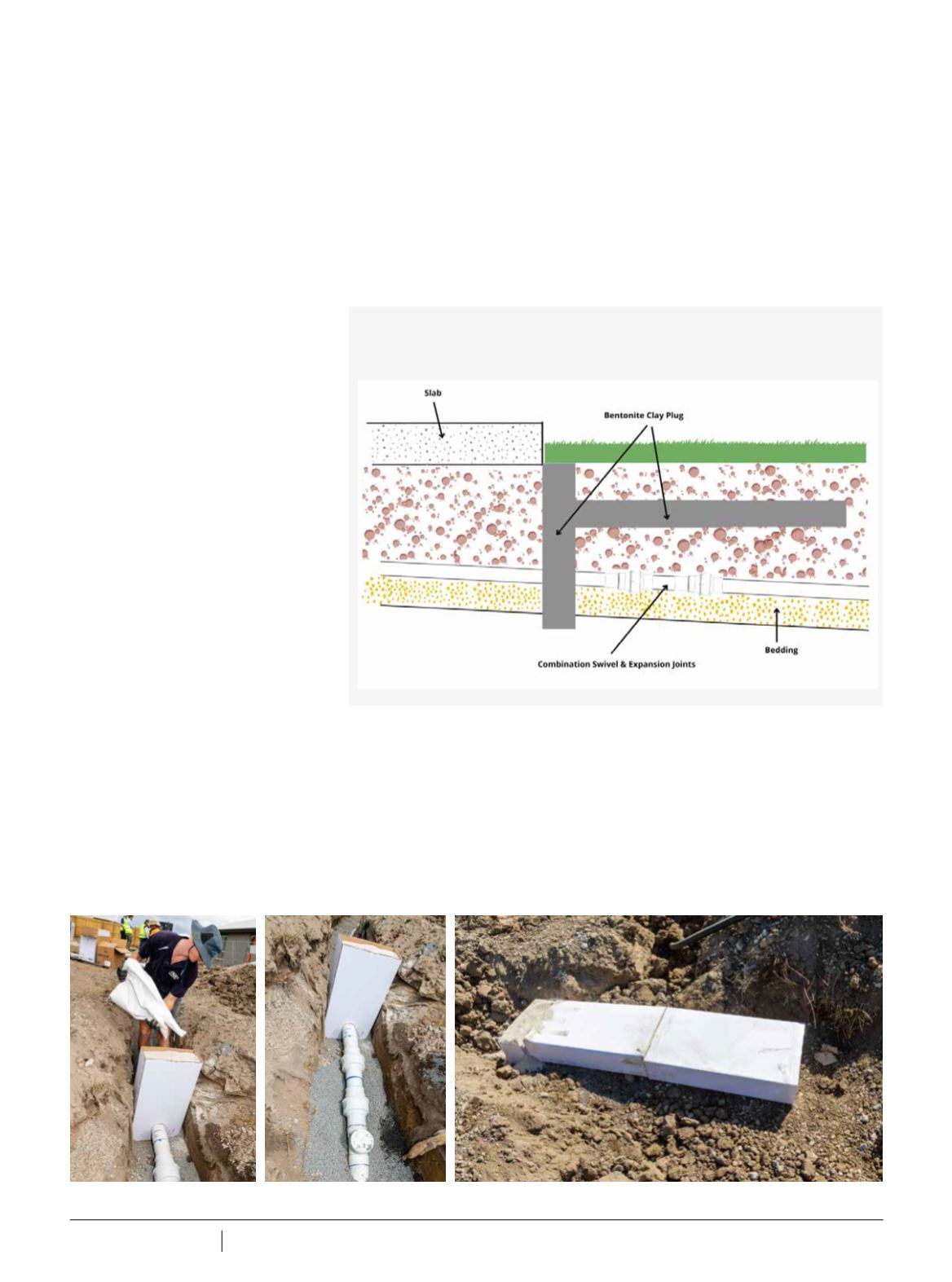

2 4
PLUMBING CONNECTION Winter 2022
GUIDANCE FOR PLUMBING IN
MOVING AND REACTIVE SOILS
T
he time has come for plumbers
and builders to pull together to
build buildings which better resist
the forces of reactive or moving soils.
Despite being a requirement for more
than 20 years through the standard
AS 2870, it has not been clear to
plumbers how they could meet those
requirements. The latest update to
AS 3500.2 (Appendix G) finally gives
guidance for plumbers and builders.
Wherever drainage or stormwater
pipes are installed in soils that can move,
due to the soil type or site preparation,
there is a risk of damage to those pipes.
Damaged pipes will lead to an increase
in water around the slabs of buildings,
aggravate soil movement, and elevate
the risk of cracked buildings. Authorities
and regulators have long attempted to
mitigate the impact of ground movement
through standards. There are several
class action lawsuits with construction
companies and developers finding
themselves in hot water as suburbs are
sinking and heaving, resulting in cracked
slabs, broken drainage and building
damage. This leaves property owners
angry and distressed, with no alternative
other than legal action.
The challenge for authorities has
been clarifying the responsible party –
plumbers are not responsible for footing
and slab designs; meantime, builders
are not responsible for the plumbing
designs. AS 2870 (Residential Slabs and
Footings), published in 1996, included
requirements for builders to provide
flexible connections on plumbing in
certain soils to prevent damage to the
system. The methods to achieve these
flexible connections were not specified,
but referred the plumber to the AS
3500 series, which also did not specify
The new Appendix G to AS 3500-2 provides a helpful guide to plumbing in unstable or reactive soils.
Chris
Ferguson
and
Dr Greg Morwood
from Plastec review the changes.
DIAGRAM 1
Clay Plug Detail
UNSTABLE SOILS-
CHRIS FERGUSON & DR GREG MORWOOD
Images 1–3. Photo of clay plug installation.
















